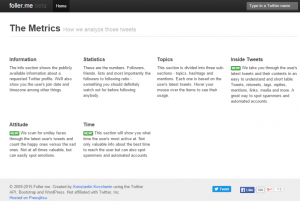The upcoming holiday season presents a series of opportunities for retailers across the United States. As consumers pivoted to online shopping again amidst surging COVID-19 case counts, e-commerce sales are projected to rise by 33% to a record $ 189 billion throughout the 2020 holiday shopping period. The revenue will begin to rapidly accelerate during the three-day Black Friday to Cyber Monday period, and then steadily climb through the December holidays into 2021. As an example, Alibaba Singles’ Day reached ?372 billion ($ 53+billion) by 12:30 am on November 11, 2020 with a record of up to 583,000 orders per second (per Coresight research).
For retailers, the unique uptick of online purchasing caused by the pandemic can (and should) be capitalized on. From strengthening supply chains for accommodating demand volatility to improving inventory management and e-commerce fulfillment capabilities, retailers will need to be ready for a new window of opportunity over the coming months. With some smart planning and optimal execution, they can take advantage of this “different” holiday season.
Make Proactive Decisions
The retailers that remain proactive during the upcoming holiday shopping period will have a greater chance at fostering consistent success. As with previous years, they should be open to starting holiday sales earlier than usual in an effort to flatten the curve of peak demand and lessen the burden on their supply chains, along with being among the first to grab the crowd’s demand. Failing to expand sales durations will cause supply-chain disruptions that deplete inventory and, in turn, sap potential profit and aggravate customers.
Instead of trying to navigate minimal staff numbers and tight employee availability, retailers should consider hiring temporary employees to bolster their in-store staff and e-commerce fulfillment centers for high periods of demand. Investing in advanced technology solutions can help streamline the temporary worker training process while monitoring consumer spending habits in real-time to align inventory with holiday demand.
Prioritize Digitization
The retail winners of the pandemic have been the companies that were quick to increase focus on e-commerce, omnichannel and digital innovation, giving the consumer the same exceptional brand experience both online and in-person at the store. Best Buy is among the first that come to mind. Traditionally, the consumer electronics retailer relied on in-store offerings more than online, but it pivoted to an e-commerce approach in response to COVID-19. It grew e-commerce sales by 242% in the second quarter to generate nearly $ 5 billion in online revenue, which produced a 200% increase in e-commerce sales over the first six months of the fiscal year. Despite closing its stores during the first quarter, Best Buy leveraged e-commerce to retain 92% of lost revenue through omnichannel options like buy-online-pick-up-in-store, click-and-collect and curbside pickup.
Wayfair is another good example. The direct-to-consumer (D2C) furnishings retailer reported second-quarter revenue increases of 84%, due in large part to a 46% increase in active customers that produced over 26 million active customers. During that span, Wayfair customers made twice as many online orders in July than Ikea — a competitor with a less extensive online presence. In the third quarter, 60% of Wayfair’s Direct Retail orders were made via mobile technology — revealing why omnichannel functionality will be another critical factor.
Adapt to New Trends
Relying only on the business strategies that worked in 2019 simply won’t work today. In order to capitalize on the 2020 holiday season, retailers will need to make significant changes to further align with COVID-19’s environment. In addition to e-commerce, they should tailor their pricing and sales structures to the value-based shopping mindset consumers have adopted during the pandemic.
The use of mobile apps in e-commerce isn’t new, but it has become an increasingly popular sales channel for consumers who desire convenience. In 2020, 78% of consumers prefer online shopping through a mobile app instead of a website, while 53% of smartphone users complete their buyer’s journey from company-specific apps. However, the spike in e-commerce popularity hasn’t completely wiped out in-store shopping. Some consumers will always prefer the in-store experience and will resume shopping in-person once lockdowns are lifted or defer to an omnichannel experience. This year’s holiday shopping season will still feature in-store customers in less-impacted regions.
The product curation needs to be looked at from a COVID-19 perspective as well. Consumers are mainly staying at home, avoiding the office, and traveling internationally far less frequently, if at all. As such, the top gifts for this holiday season would be different from seasons past. Advanced forecasting technologies can sense demand for different product attributes and curate the right SKUs for each store to offer this holiday season.
In turn, retailers must be able to still handle in-store demands while e-commerce is surging. Leveraging advanced technology can help streamline that process by improving customer experiences, forecasting accuracy, store layouts, product shelf-placement, operational efficiency and COVID-19 safety compliance. By embracing e-commerce to its fullest potential, retailers not only position themselves to withstand the rest of COVID-19, but also foster sustained long-term success in an uncertain post-pandemic environment by earning the loyalty of customers who return over and over. For more information on how integrating advanced technology can help retailers navigate the COVID-19 pandemic, schedule a free demo with Zebra Analytics.
Digital & Social Articles on Business 2 Community(20)





